Budget Laundry Room Tile Makeover Under $500
Most homeowners never consider remodeling their laundry room. We accept the cracked linoleum and dreary walls, assuming a real fix will cost thousands. But what if you could completely transform your laundry space for less than the cost of a new phone? What if a stylish, modern, and durable makeover was possible for under $500?
This isn’t about cutting corners; it’s about making smart choices. A budget laundry room makeover is entirely within your reach, thanks to the innovation of modern materials. The key is high-quality peel and stick tiles for the laundry room, a game-changer for DIY enthusiasts.
We’re going to show you exactly how it’s done. This guide moves beyond theory and into reality with itemized case studies of stunning transformations achieved on a shoestring budget. You’ll get a step-by-step installation guide and a complete budget planner.
Let’s look at how real people are pulling off incredible laundry room makeovers without breaking the bank.
Why Laundry Room Makeovers Don’t Have to Be Expensive
The Question: Ever get a quote for a small renovation and feel your wallet physically ache?
The Promise: This section reveals why a laundry room refresh doesn’t need a five-figure budget, showing you the massive cost difference between traditional and modern methods.
A traditional laundry room remodel can be surprisingly costly. According to 2025 home improvement data, the average cost hovers between $2,000 and $5,000, and can easily climb higher if plumbing or electrical work is involved. This sticker shock is exactly why most laundry rooms remain neglected.
But there’s a smarter way. An affordable laundry room tile makeover centers on high-impact, low-cost materials. The star of the show is the peel and stick tile. This single choice dramatically reduces your budget by eliminating the need for expensive labor, thin-set mortar, grout, and specialized tools.
Think of the cost difference this way. A professionally tiled 80-square-foot laundry room could cost over $1,200 in labor and materials. A DIY project using quality peel and stick vinyl tiles for the same space could cost as little as $200. You get a fresh, durable, and beautiful new floor for a fraction of the price.
This isn’t about settling for less. It’s about reallocating your budget toward what matters. With the money you save on flooring, you can add stylish storage, a fresh coat of paint, or updated lighting, achieving a complete transformation that looks far more expensive than it actually is.

Case Study 1: $350 Laundry Room Floor Transformation
The Question: Curious what a real-world sub-$500 makeover actually entails?
The Promise: We’ll walk you through a detailed, step-by-step case study of a complete floor overhaul for just $350, proving a huge impact is possible on a tiny budget.
Meet Sarah, a homeowner whose 70-square-foot laundry room was defined by stained, 20-year-old linoleum. The room felt dark and uninviting. After receiving a quote for over $1,800 to have it professionally retiled, she decided to take the DIY peel and stick flooring route. Her goal was a bright, clean, and modern look.
Her project took one weekend from start to finish. The first step was crucial: preparation. She thoroughly cleaned the old linoleum with a degreaser to ensure the new tiles would adhere properly. Since her floor was level and in decent shape, she was able to install the new tiles directly over the old surface.
Sarah chose a classic black-and-white checkered pattern to create a timeless, high-contrast look. Starting from the center of the room, she laid her first tile and worked her way outwards, carefully pressing each one into place. A simple utility knife was all she needed to cut tiles for the edges and around obstacles.
The transformation was immediate and stunning. The new floor made the entire room feel brighter and more intentional. Once you see the possibilities, you'll be inspired to start your own project.
Budget Breakdown:
Choosing the Best Peel and Stick Tiles for Laundry Rooms
The Question: Feeling overwhelmed by the sheer number of tile options and worried you’ll pick the wrong one?
The Promise: This section provides a clear, expert-backed guide to selecting tiles that are waterproof, durable, and stylish, ensuring your investment lasts.
Not all peel and stick tiles are created equal, especially in a space prone to moisture and heavy use like a laundry room. Making the right choice is the most important step in your budget laundry room makeover. Here are the essential criteria to focus on.
Core Criteria for Laundry Room Tiles
- Waterproof Construction: This is non-negotiable. Look for tiles explicitly labeled as waterproof peel and stick floor tiles for laundry areas. These are typically made from 100% vinyl, which prevents water from seeping through to the subfloor. A common myth is that all peel and stick tiles can handle water, but many are only water-resistant.
- Durability and Thickness: A thicker tile offers better longevity and a more premium feel underfoot. Look for a wear layer of at least 12 mil (0.3 mm) for moderate traffic areas. A thicker tile also does a better job of hiding minor imperfections in the subfloor.
- Adhesive Quality: The quality of the adhesive determines whether your tiles stay put or start peeling up at the corners. The best brands for peel and stick tiles in 2025 use powerful, pressure-sensitive adhesives that create a long-lasting bond.
- Design and Texture: Modern peel and stick tiles come in a vast array of designs, from realistic wood and stone looks to bold geometric patterns. A textured surface can provide better slip resistance and a more authentic appearance.
Eco-Friendly and Top-Rated Options
For those looking for sustainable choices, eco-friendly peel and stick floor tiles are becoming more available. These are often made from recycled vinyl or other sustainable materials and use low-VOC (volatile organic compound) adhesives, which is better for your home’s air quality.
When you're ready to explore options, quality matters. For a curated selection of proven styles and top-rated options perfect for this kind of project, the definitive resource is our comprehensive guide on the Best Peel and Stick Tiles for Laundry Room Floors in 2025. It's the perfect starting point for finding a tile that fits your budget and design vision.
Step-by-Step Guide: Installing Peel and Stick Tiles on a Budget
The Question: Ready to start your project but unsure about the exact installation process?
The Promise: This is your foolproof, step-by-step manual for installing peel and stick tiles for the laundry room, ensuring a professional and durable finish.
A successful installation is 90% preparation. Rushing this first step is the single biggest mistake DIYers make. With a little patience and attention to detail, you can achieve a flawless look.
Step 1: Surface Preparation
Your floor must be clean, smooth, and dry. Scrape away any old adhesive or debris. Use a degreasing cleaner to remove any grime, wax, or oil. If you are installing over concrete or a porous surface, applying a coat of latex primer is a pro-level tip that guarantees a stronger bond.
Step 2: Planning Your Layout
Do not start tiling from a corner. Find the center of your two longest walls and snap chalk lines to find the center point of the room. Do a "dry run" by laying out tiles from the center outwards to see how your cuts will land at the walls. This helps you avoid leaving tiny, awkward slivers of tile at the edges.
Step 3: Application
Begin at the center point you marked. Peel the backing from your first tile, align it carefully with your chalk lines, and press it down firmly. Work from the center of the tile outwards to push out any air bubbles. Continue laying tiles, making sure the edges are tight against each other without overlapping.
Step 4: Cutting and Fitting
For tiles along the wall, place a loose tile directly on top of the last full tile you laid. Place another tile on top of that, but slide it to the wall. Use its edge as a guide to draw a cut line on the tile beneath it. This simple trick ensures a perfect measurement every time. Use a sharp utility knife and a straight edge for clean cuts.
For a deeper dive into the process with troubleshooting tips, the most helpful resource is our complete tutorial on How to Install Peel and Stick Tiles in the Laundry Room. It's designed to guide you through every potential challenge.

Would you spend $500 on a laundry upgrade?
Case Study 2: $480 Laundry Room Storage + Tile Combo
The Question: Need to tackle more than just the floor? How do you add storage and wall protection on the same tight budget?
The Promise: This real-world case study breaks down a complete $480 makeover that combines flooring, a stylish backsplash, and practical storage solutions.
Mark’s laundry area was a small, dysfunctional closet. His goal was to maximize function and style with a laundry room storage and peel and stick flooring combo. He wanted a durable floor, a backsplash to protect the wall behind the washer and dryer, and open shelving for easy access to supplies.
He started with the floor, choosing a durable, wood-look vinyl plank. Next, he tackled the wall with laundry room peel and stick backsplash ideas. He opted for a classic white subway tile design, which instantly brightened the small space and made it easier to clean. The installation for the backsplash was even faster than the floor.
For storage, Mark installed simple, inexpensive metal brackets and stained pine boards from a local hardware store. This created two long shelves above the machines, getting detergents and supplies off the floor. The combination of the warm wood floor, bright white backsplash, and functional shelving completely transformed the closet.
Mark drew inspiration for his project from various sources, adapting techniques for his specific needs. The methods in our guide on How to DIY Peel Stick Kitchen 2025 are perfectly suited for creating a laundry backsplash, showcasing how skills can transfer from one room to another.
Budget Breakdown:

If you're looking for more backsplash design ideas or a detailed guide on applying them, our article on the Best Peel and Stick Backsplash Designs for 2025 has everything you need to know. For broader inspiration, see how others have completely changed their spaces in our showcase of 5 Stunning Kitchen Transformations.
Maintenance, Longevity, and Cleaning Tips
The Question: Are you worried that your beautiful new peel and stick floor won't stand the test of time?
The Promise: This section gives you the expert-backed cleaning hacks and maintenance secrets to ensure your affordable laundry room tile makeover looks brand new for years.
One of the biggest questions people have is about durability. How long do peel and stick tiles actually last in a laundry room? With proper installation and care, a high-quality tile can last from 7 to 15 years. The key is to protect your investment with a simple maintenance routine.
The number one rule is to address moisture. While you should choose waterproof peel and stick floor tiles for laundry areas, it's still wise to wipe up any spills from the washer or sink promptly. This prevents water from potentially working its way into the seams over time.
For even greater peace of mind, some DIYers apply a thin bead of clear silicone caulk around the perimeter of the room where the tiles meet the baseboards. This creates an extra waterproof seal, offering maximum protection against moisture. Many of the core principles for moisture proofing are universal. The advice in our guide on Peel Stick Bathroom Tile for Moisture offers excellent strategies that are just as effective in a laundry room setting.
Easy Cleaning Checklist:
- Sweep or vacuum regularly to remove dirt and grit that can scratch the surface.
- Use a pH-neutral cleaner. Harsh chemicals like bleach or ammonia can damage the tile’s finish and weaken the adhesive. A simple solution of vinegar and water often works best.
- Avoid abrasive tools. Never use steel wool or harsh scrubbing pads. A microfiber mop or soft cloth is all you need.
- Place felt pads under the feet of your washer and dryer to prevent scratches when they are moved.
By following these simple steps, you ensure your DIY peel and stick flooring remains a source of pride for years, proving that a budget-friendly choice can also be a long-lasting one.
Budget Planning Checklist: Keep It Under $500
The Question: How do you make sure your project doesn't spiral out of control and go over budget?
The Promise: This section provides a simple but powerful checklist to plan your spending, track every dollar, and avoid the hidden costs that can derail a budget-friendly laundry remodel.
A successful budget project is a well-planned one. Having a clear financial roadmap from the start prevents overspending and ensures you can get everything you want without any surprises. Use this checklist as your guide.
Your Budget Template
Before you buy anything, list out every potential expense. Be specific.
- Flooring: Cost per square foot x Total square feet (+10% extra) = ______
- Backsplash (if applicable): Cost per square foot x Total square feet = ______
- Prep Supplies: Cleaner, primer, rags, etc. = ______
- Tools: Utility knife, blades, straight edge, measuring tape = ______
- Finishing Touches: Baseboards, caulk, quarter-round molding = ______
- Storage & Decor: Shelving, baskets, paint, lighting = ______
- Contingency Fund (10% of total): = ______
- Grand Total: ______
Hidden Costs to Watch For
A common mistake is forgetting the small things that add up. Your project might need a floor leveling compound if the subfloor is uneven. You may discover you need to replace a section of subfloor. Always set aside at least 10% of your total budget as a contingency fund for these unexpected issues.
Where to Save vs. Where to Splurge
- Splurge: Always buy the best quality peel and stick tiles for your laundry room that you can afford. The tile itself is the foundation of the project, and a premium product offers better durability, adhesion, and appearance.
- Save: You can save money on tools by borrowing from a friend or checking for rental options. You can also find great deals on storage baskets, decor, and even lighting at discount stores or by shopping sales.
Final Tips for a Modern, Affordable Laundry Room Makeover
The Question: Ready to put the finishing touches on your project for a truly polished, modern aesthetic?
The Promise: Here are some final design hacks and sourcing strategies to ensure your affordable laundry room makeover is a stunning success from floor to ceiling.
Your budget laundry room makeover is more than just the floor. It’s about creating a cohesive and functional space. With the money you saved using peel and stick tiles, you can now focus on the details that elevate the entire room.
Design Hacks for Small Spaces
- Go Vertical: In a small laundry room, use the wall space. Install tall, narrow shelving or a pegboard to organize supplies. This draws the eye upward and makes the room feel larger.
- Light Colors are Your Friend: Light-colored tiles, paint, and shelving will reflect more light, making a cramped space feel open and airy. A bold floor pattern can work beautifully if the walls are kept simple and bright.
- Unified Hardware: If you have cabinets, swapping out the old knobs and pulls for modern, matching hardware is an inexpensive update that makes a huge difference.
When to DIY vs. Hire Help
A peel and stick tile installation is a fantastic DIY project. However, if your subfloor is badly damaged or you need to move plumbing lines, it's best to call a professional for that portion of the job. You can still save thousands by handling the cosmetic updates yourself. For a foolproof installation guide perfect for beginners, see our Easy Guide to Installing Peel & Stick Subway Tiles, which has tips applicable to any tile project.
Think of the amazing possibilities. Imagine a clean, minimalist room with large-format slate-gray tiles and open birch shelving. Or picture a fun, whimsical space with a colorful patterned floor tile, white walls, and a single, vibrant accent color for your storage bins. A beautiful laundry room is now within your reach. For even more before-and-after inspiration, explore our guide on how to Transform Your Bathroom with Peel and Stick Tiles in 2025, as many design principles can be adapted for the laundry room.
This project proves that you don’t need a massive budget to create a space you love. With smart material choices and a bit of weekend effort, you can turn a forgotten room into a functional and stylish part of your home.
Your dream laundry room isn't thousands of dollars away—it might just be a few boxes of tile and a free weekend. You have the knowledge and the plan. Now you can get started on creating a space that makes laundry day a little brighter.
Frequently Asked Questions
1. Can I put peel and stick tiles directly over my old laundry room floor?
In many cases, yes. You can install them over existing linoleum, vinyl, or even ceramic tile, as long as the surface is clean, flat, and in good condition. You must thoroughly clean and degrease the old floor. If installing over ceramic tile, you may need to fill in the grout lines with a leveling compound to create a smooth surface.
2. How do I choose a peel and stick tile that won't look cheap?
To avoid a "cheap" look, focus on thickness and texture. Choose tiles that are at least 2mm thick and have a textured or embossed finish that mimics real stone or wood. High-quality brands often have beveled edges, which create more realistic "grout" lines and add depth.
3. What is the hardest part of a DIY peel and stick tile installation?
The most challenging parts are the preparation and the cutting. Rushing the prep phase by not cleaning or priming the floor properly will lead to adhesive failure. Making precise cuts around door frames or appliances requires patience. Measure twice, cut once, and always use a sharp blade for the cleanest results.
4. Are eco-friendly peel and stick floor tiles as durable?
Yes, high-quality eco-friendly peel and stick floor tiles are engineered to be just as durable as their traditional vinyl counterparts. Brands that specialize in sustainable products often use robust, recycled materials and advanced manufacturing processes to ensure their tiles can withstand the rigors of a high-traffic area like a laundry room.

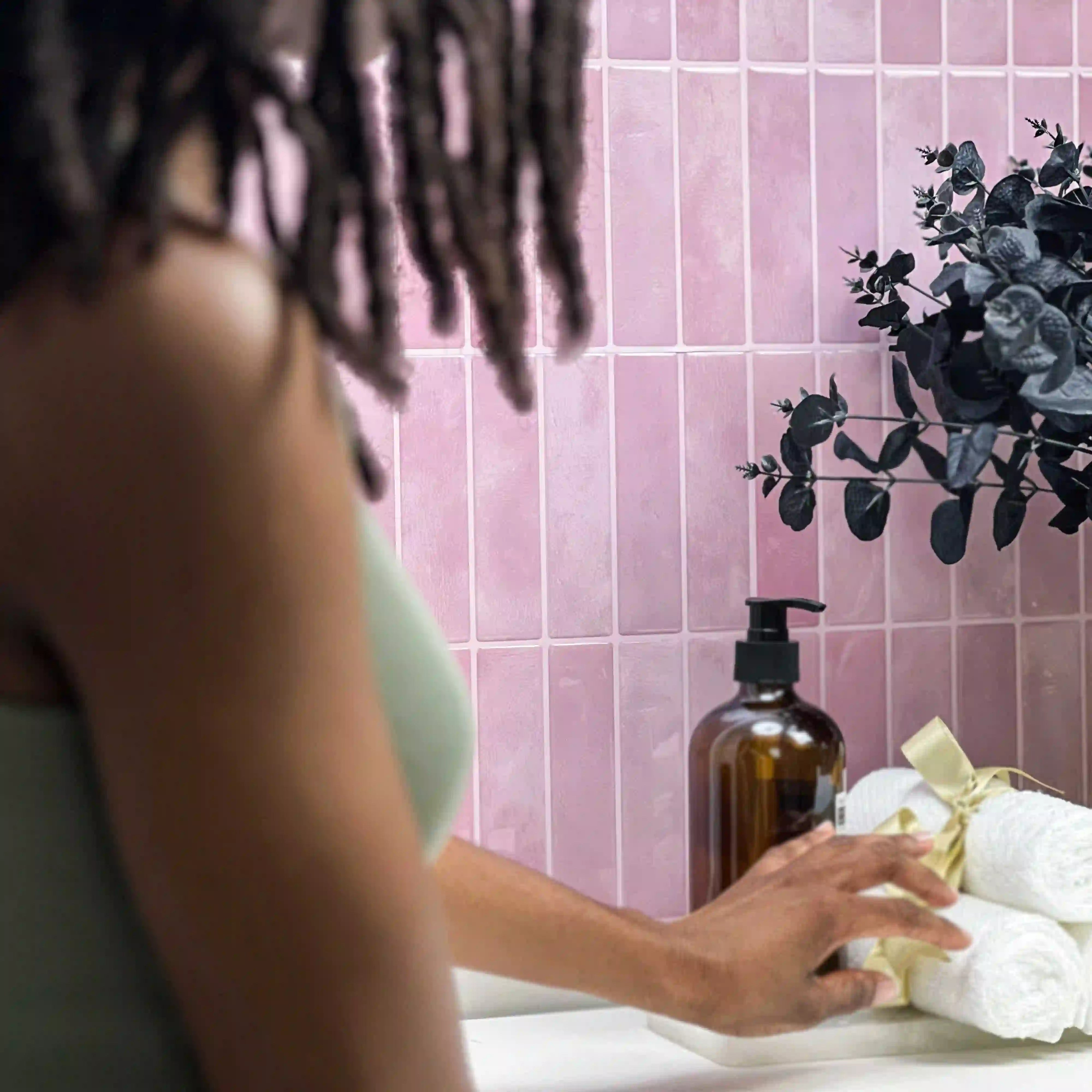
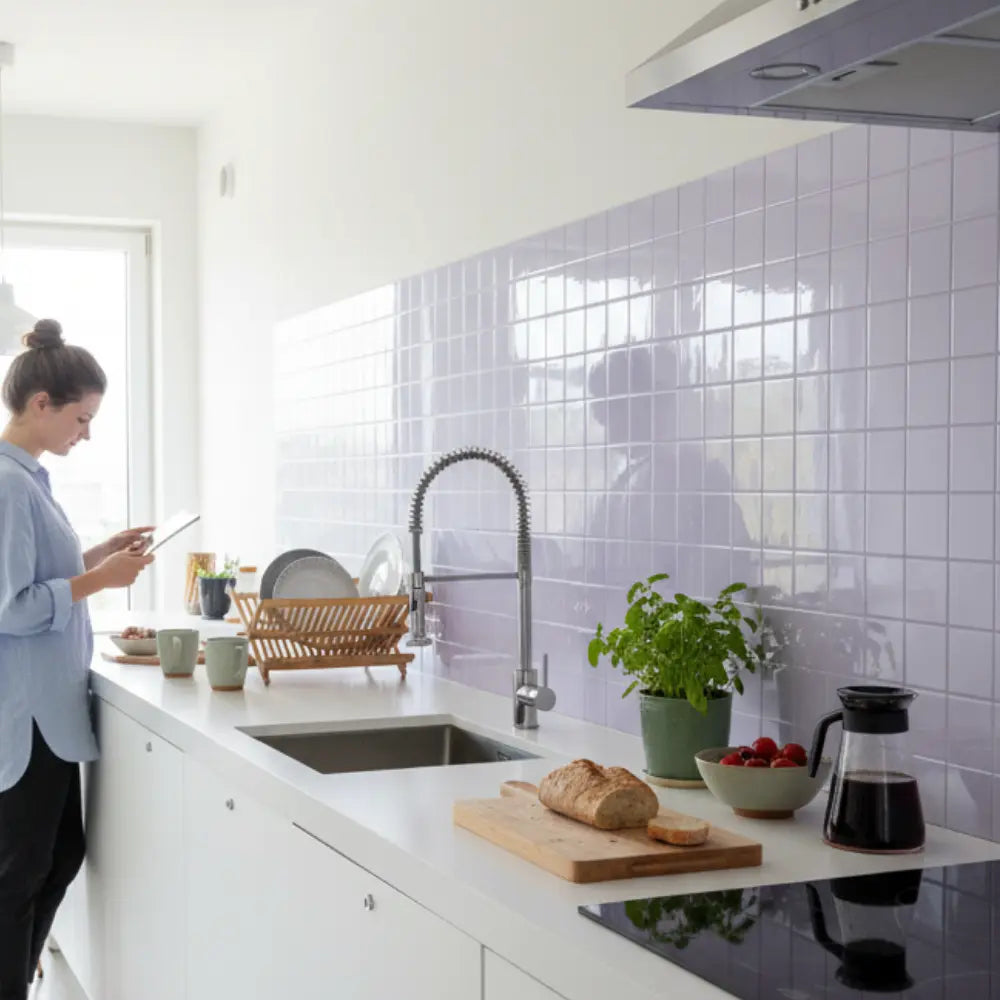
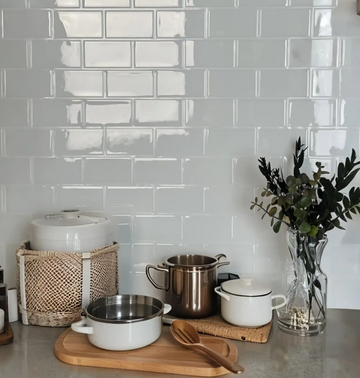
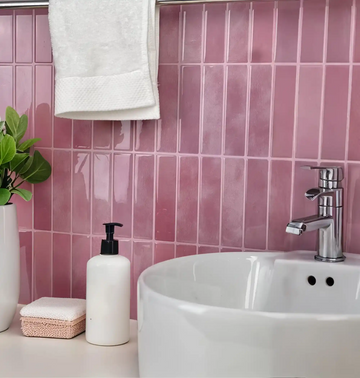
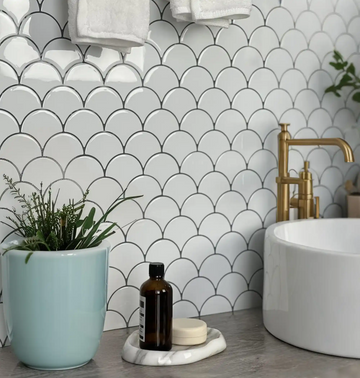
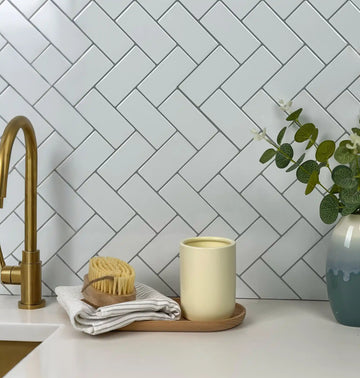
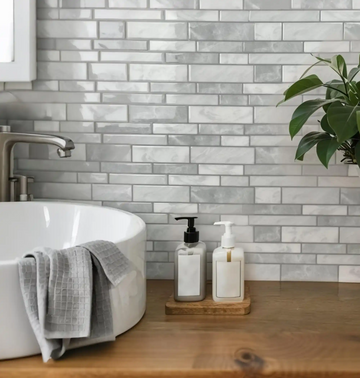
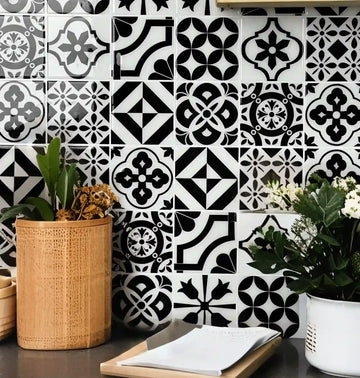

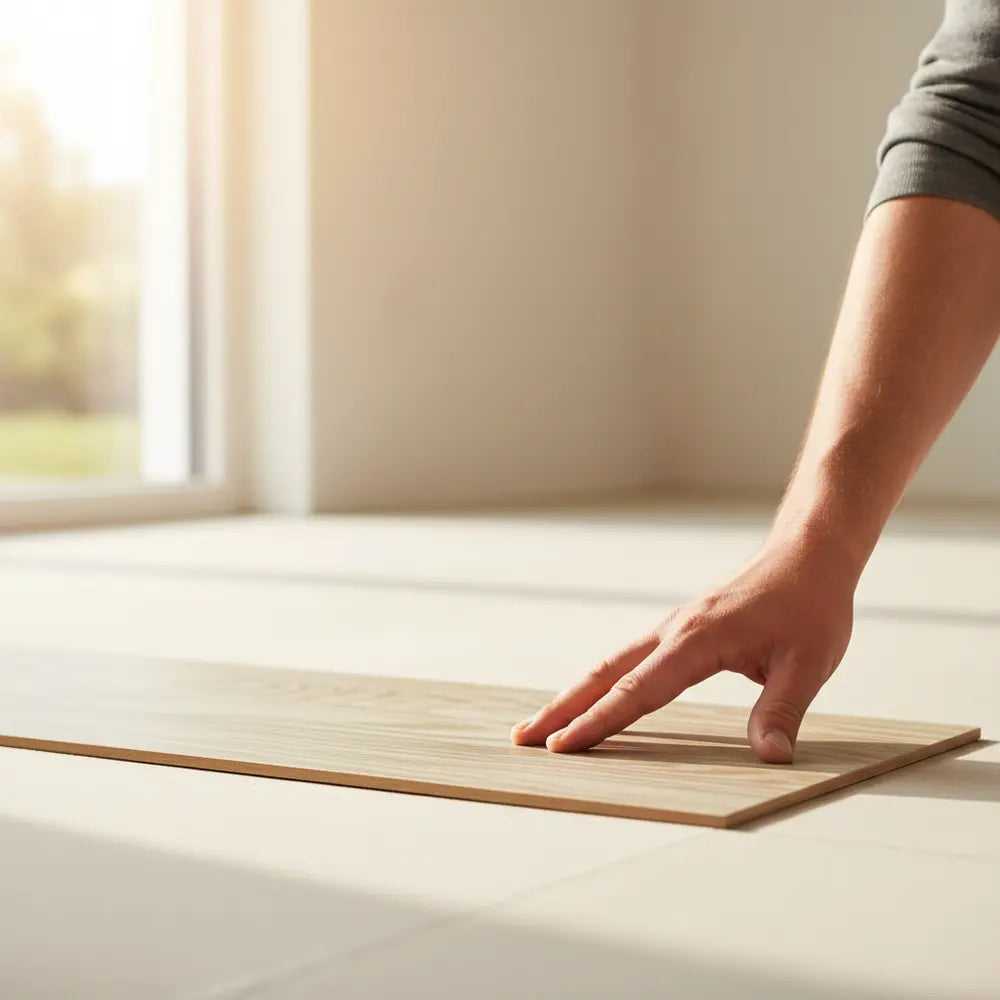
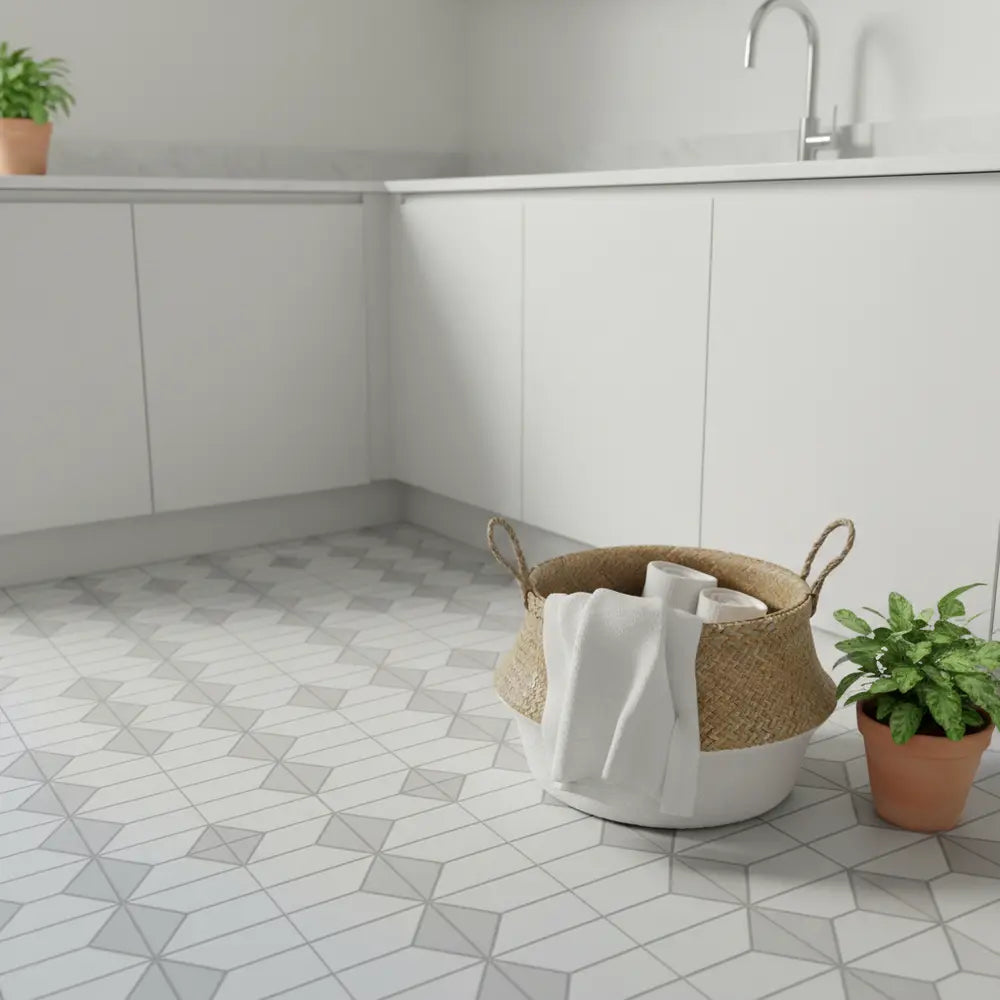
Laisser un commentaire
Ce site est protégé par hCaptcha, et la Politique de confidentialité et les Conditions de service de hCaptcha s’appliquent.